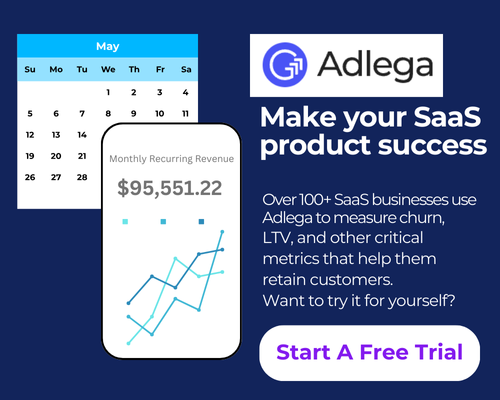
Content marketing has emerged as a critical growth driver for Software-as-a-Service (SaaS) companies, but many founders struggle to understand its theoretical foundations and why it works so effectively in this specific business model. This comprehensive guide explores the fundamental concepts behind SaaS content marketing, helping founders build a strategic framework for sustainable growth.
What is Content Marketing in the SaaS Context?
Content marketing for SaaS goes beyond general definitions. It’s a strategic approach that uses valuable, relevant, and consistent content to attract, engage, and convert a clearly defined audience—specifically, potential software users with ongoing subscription value. Unlike traditional products, SaaS offerings typically have longer sales cycles, require ongoing customer education, and depend heavily on trust building through expertise demonstration.
Recent data shows that 95% of B2B buyers view content as a trustworthiness indicator when evaluating software solutions. Furthermore, SaaS companies that prioritize content marketing generate 67% more leads than those that don’t, making it not just important but essential for sustainable growth.
The Theoretical Foundation of SaaS Content Marketing
The Unique Nature of SaaS Purchase Decisions
SaaS purchase decisions differ significantly from other products in several key ways:
Extended evaluation periods: Buyers typically spend 2-3 months researching before making decisions on software solutions, creating multiple touchpoints where content can influence the buying process.
Multiple stakeholder involvement: On average, 6-10 decision-makers are involved in B2B SaaS purchases, each requiring different types of content that address their specific concerns.
Technical and business considerations: Buyers must evaluate both technical compatibility and business value, creating dual content needs that focus on both implementation and ROI.
The Role of Education in SaaS Marketing
SaaS solutions often solve complex problems, making education a crucial component of the marketing process. Founders must recognize that their content serves as both marketing material and product education, blurring the lines between acquisition and retention content.
Educational content builds the foundation for what experts call “marketing qualified leads” by:
1. Helping prospects properly identify and frame their problems
2. Providing the vocabulary and concepts needed to evaluate solutions
3. Setting realistic expectations about implementation and results
The SaaS Content Marketing Funnel
The content marketing funnel for SaaS differs from traditional models due to the subscription nature of the business and the importance of customer lifetime value.
Awareness Stage: Theory and Objectives
At this stage, potential customers are experiencing problems but may not be actively seeking solutions or may not have framed their problems in terms of needing software. The theoretical objectives here are:
Problem identification: Helping prospects recognize and name their challenges
Educational foundation: Building basic knowledge about the problem domain
Trust initiation: Establishing initial credibility through helpful, non-promotional content
The awareness stage typically requires 7-8 content touches before a prospect moves to consideration, according to SaaS marketing research.
Consideration Stage: Theory and Objectives
During consideration, prospects understand their problems and are actively evaluating potential solutions, including your SaaS product and competitors. The theoretical goals are:
Solution education: Explaining different approaches to solving the identified problem
Evaluation framework: Providing criteria for comparing solutions
Differentiation groundwork: Subtly highlighting factors where your solution excels
This stage represents the critical juncture where content must balance educational value with persuasive elements—maintaining neutrality while guiding prospects toward your solution’s strengths.
Decision Stage: Theory and Objectives
At the decision stage, prospects are finalizing their selection between a shortlist of solutions. The theoretical objectives shift to:
Risk mitigation: Addressing implementation concerns and objections
Social proof emphasis: Demonstrating success patterns with similar customers
Technical validation: Providing detailed information for technical stakeholders
Financial justification: Supporting ROI calculations and business case development
Retention and Advocacy: Theory and Objectives
Unlike many products, SaaS customer relationships continue post-purchase, making retention content essential. The theoretical focus here is:
Value realization: Helping customers implement and succeed with your solution
Expanded use: Educating on advanced features and use cases
Community building: Creating connections between customers
Referral generation: Providing shareable content that helps customers advocate
Research shows that existing SaaS customers engaged with educational content have 31% higher retention rates and 2.4x higher expansion revenue than those who don’t engage with content.
Content Types and Their Strategic Purpose
Each content type serves specific strategic purposes within the SaaS marketing ecosystem. Understanding these purposes helps founders allocate resources effectively.
Educational Content: Role and Purpose
Educational content includes blog posts, guides, whitepapers, and courses. Its strategic purpose includes:
Search visibility: Capturing organic traffic through problem-focused keywords
Expertise demonstration: Establishing thought leadership in your solution domain
Qualification: Attracting prospects with relevant problems
Educational content typically drives 3x more leads than paid search for SaaS companies while costing 62% less per lead, making it the foundation of most successful SaaS content strategies.
Social Proof Content: Role and Purpose
Social proof content includes case studies, testimonials, and reviews. Its strategic value lies in:
Risk reduction: Mitigating the perceived risk of adoption
Use case illumination: Showing real-world applications and results
Objection handling: Addressing common concerns through peer experiences
Startups with robust case study content convert leads at 2-3x higher rates in competitive SaaS categories, highlighting the critical nature of this content type.
Technical Content: Role and Purpose
Technical content includes documentation, API guides, and implementation resources. Its purpose includes:
Developer enablement: Supporting technical evaluation and implementation
Self-service enablement: Reducing support requirements
Technical credibility: Building trust with technical stakeholders
For developer-focused SaaS products, high-quality technical content can reduce sales cycle length by up to 20% by enabling faster technical validation.
Thought Leadership: Role and Purpose
Thought leadership includes original research, industry analysis, and visionary content. Its strategic function includes:
Differentiation: Setting your company apart through unique perspectives
Premium positioning: Supporting higher price points through authority
Partner/investor attraction: Building credibility with ecosystem participants
SaaS companies with strong thought leadership content command 15-20% higher valuations during funding rounds, reflecting the market’s recognition of its strategic importance.
Measuring Content Marketing Success: The Framework
Understanding how to measure content marketing effectiveness requires a clear theoretical framework tailored to SaaS business models.
Content Marketing KPIs Explained
Unlike traditional marketing, SaaS content performance should be measured across multiple dimensions:
Acquisition metrics: Organic traffic, keyword rankings, backlinks, and referral sources
Engagement metrics: Time on page, content completion rates, return visits, and subscription actions
Conversion metrics: Content-attributed leads, content-influenced pipeline, and content-sourced revenue
Retention metrics: Customer content engagement, help center usage, and knowledge base impact on support tickets
The key theoretical insight is that content metrics must align with the SaaS customer journey rather than focusing solely on top-of-funnel performance.
Attribution Models for SaaS Content
Content attribution in SaaS requires specialized models due to complex buyer journeys:
First-touch attribution: Assigns value to content that initially attracts prospects
Last-touch attribution: Credits content consumed immediately before conversion
Linear attribution: Distributes credit evenly across all content touchpoints
Position-based attribution: Weights first and last touchpoints more heavily than middle interactions
Time-decay attribution: Assigns more value to content consumed closer to conversion
Research indicates that multi-touch attribution models most accurately reflect SaaS buying realities, with position-based models showing the strongest correlation to actual customer journeys.
Content ROI Calculation Methodology
Calculating content ROI for SaaS requires accounting for both immediate conversion impact and long-term SEO value:
ROI = (Customer Lifetime Value × Content-Attributed Conversions) ÷ (Content Creation + Distribution Costs)
This formula can be enhanced by including:
1. Content asset depreciation rates (typically 20-30% annually for evergreen SaaS content)
2. Compounding traffic value from SEO-optimized content
3. Support deflection value from educational content
The Theoretical Timeline for Content Marketing Results
Understanding realistic timelines is crucial for proper resource allocation:
Short-term (1-3 months): Initial engagement metrics and direct conversions from bottom-of-funnel content
Medium-term (3-6 months): Growing organic visibility, increasing lead quality, and early SEO traction
Long-term (6-18 months): Compounding organic traffic, established thought leadership, and full-funnel attribution
The theoretical model suggests that SaaS content marketing typically reaches positive ROI between months 4-8, with compounding returns thereafter as content assets accumulate.
The Psychological Aspects of SaaS Content Marketing
The psychological underpinnings of SaaS content marketing explain its effectiveness at influencing complex purchasing decisions.
Building Trust Through Content
Trust is particularly crucial in SaaS purchasing due to implementation risks, data security concerns, and long-term commitments. Content builds trust through:
Consistency principle: Regular publishing signals stability and longevity
Authority signals: Demonstrating deep domain expertise reduces perceived risk
Transparency markers: Honest discussion of limitations builds credibility
Trust-building content typically needs 5-7 touchpoints to significantly impact purchase intent, according to B2B software buying research.
Addressing Pain Points and Objections
Effective SaaS content proactively addresses customer concerns:
Loss aversion: Content that frames solutions in terms of avoiding losses outperforms gain-focused messaging by 2.5x
Status quo bias: Content must overcome the natural tendency to avoid change
Decision paralysis: Structured content that simplifies complex decisions increases conversion probability
The theoretical principle here is that objection-handling content serves as a “risk proxy” that allows prospects to process concerns before engaging with sales teams.
Demonstrating Expertise and Authority
SaaS buyers seek experts, not just vendors. Content establishes expertise through:
Thought progression: Moving audiences from basic to advanced concepts demonstrates depth
Concept origination: Creating frameworks and terminology positions your company as a domain authority
Problem reframing: Helping customers see their challenges in new ways signals consultative value
Research shows that SaaS companies positioned as category authorities command 1.5-2.3x higher conversion rates at the same price points as perceived followers.
Creating a “Knowledge Moat” Through Content
A strategic “knowledge moat” creates sustainable competitive advantage:
SEO dominance: Comprehensive content that captures category-defining keywords
Information asymmetry: Providing exclusive insights unavailable elsewhere
Educational ecosystem: Building interconnected content that keeps prospects in your company’s orbit
Leading SaaS companies invest 25-40% of their marketing budgets in creating this knowledge moat, recognizing it as one of the few defensible advantages in the digital landscape.
Conclusion and Theoretical Framework Summary
Content marketing is not simply a tactical channel for SaaS companies—it’s a strategic foundation that influences every aspect of the customer journey. Its effectiveness stems from addressing the unique characteristics of SaaS purchasing: complex decisions, multiple stakeholders, extended timelines, and ongoing relationship value.
The theoretical framework outlined here provides SaaS founders with the conceptual understanding needed to build effective content strategies by:
1. Aligning content types with specific stages of the SaaS buyer journey
2. Balancing educational value with strategic business objectives
3. Measuring content effectiveness through SaaS-specific metrics
4. Leveraging the psychological principles that influence software purchasing
As you develop your content marketing strategy, remember that the most successful SaaS companies view content not as a marketing expense but as a compounding business asset that generates increasing returns over time. In an industry where product differentiation is often fleeting, your content-driven expertise can become your most durable competitive advantage.

Leave a Reply